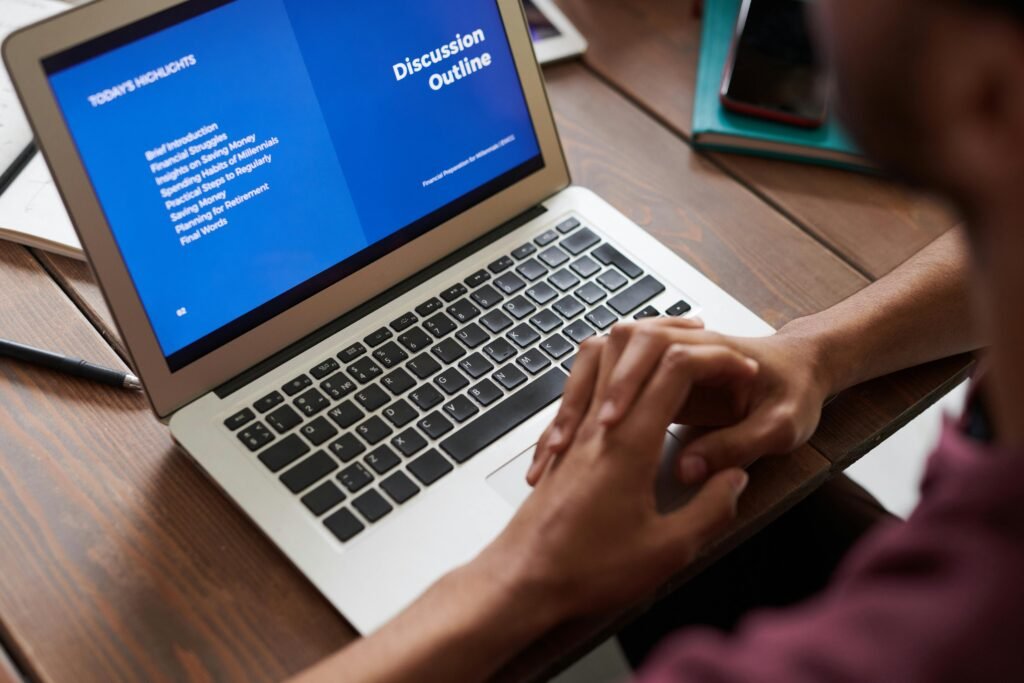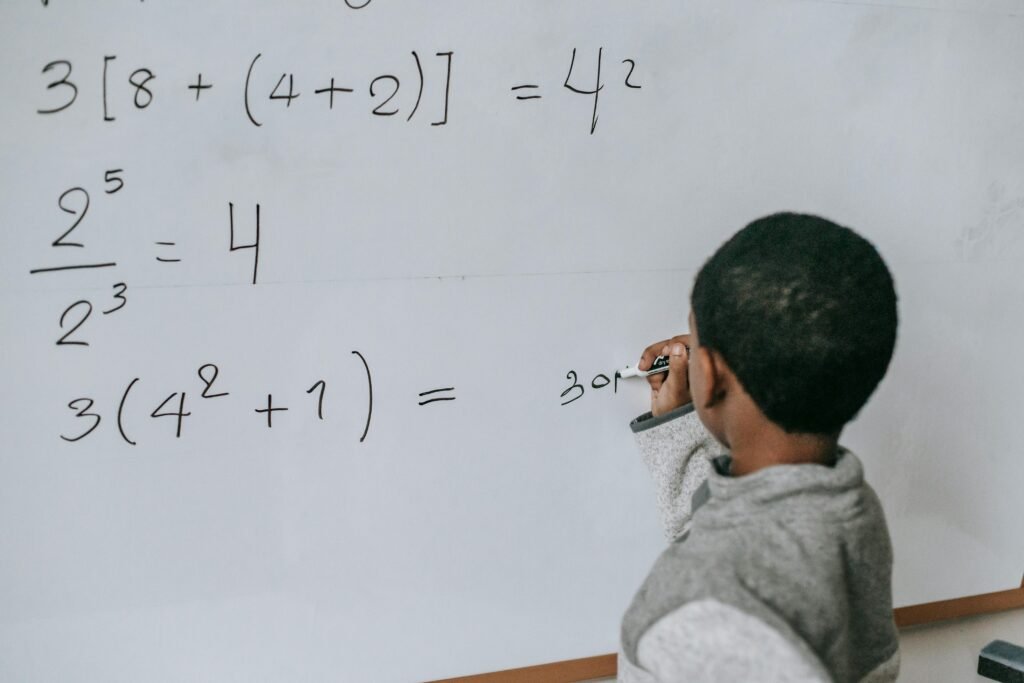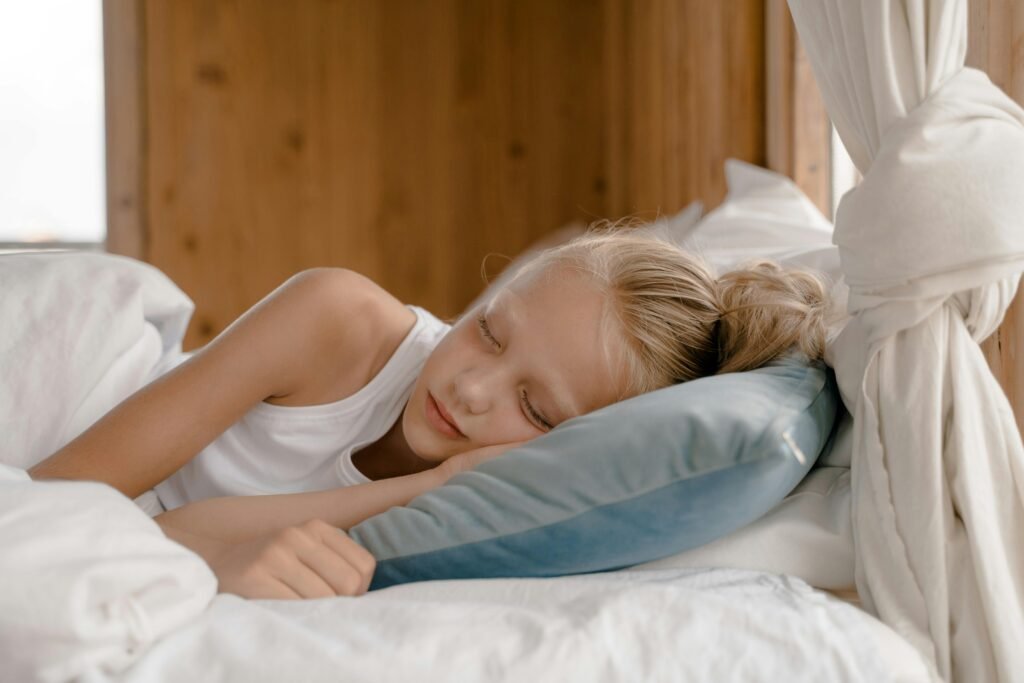Screens are everywhere. Phones, tablets, TVs, computers—they fill our homes and schools. They help us connect, learn, and explore. But for kids with ADHD, screens can be a tricky thing. Sometimes they help. Sometimes they make things harder.
Children with ADHD are 2.5 times more likely to exceed recommended screen time limits than their peers
Many doctors say kids should only spend about 1 to 2 hours a day on screens (not including schoolwork). But children with ADHD often go way beyond that. Studies show they are 2.5 times more likely to pass these limits.
That means while most kids may use screens for 2–3 hours a day, many children with ADHD are spending 5 or more hours glued to them.
Why is this happening? Kids with ADHD often look for things that give them quick rewards. Screens are full of these. Whether it’s a game, a cartoon, or a fast-moving video, the screen gives the brain a little “ping” of excitement.
This can feel calming or fun to a child with ADHD—but it can also become a habit that’s hard to break.
Spending too much time on screens can take away from important things—like sleep, reading, talking with family, playing outside, or just relaxing. When kids with ADHD spend more time on screens, they may find it harder to focus in class or sit still during lessons. They may even have more tantrums or meltdowns when the screen is taken away.
So what can you do? First, watch and track how much time your child spends on screens each day. Use timers or screen time settings on devices. Try to slowly bring the time down, even by 15 minutes a week.
Replace that screen time with something your child enjoys that doesn’t involve a screen—like drawing, building, or walking. And talk with your child about why limits are needed. When they feel part of the plan, they’re more likely to follow it.
It’s not about banning screens. It’s about balance. Helping your child understand what too much screen time can do will give them power to make better choices. And as they grow, these small changes can lead to big improvements in focus, learning, and mood.
Over 75% of children with ADHD use digital devices for more than 3 hours daily
When researchers looked at kids with ADHD, they found that more than 75% of them were using screens for over three hours a day. That’s a lot more than what’s considered healthy. And remember—this number doesn’t include screen time for school or homework. This is just the “extra” time on games, videos, and apps.
Why do kids with ADHD love screens so much? It’s simple. Screens move fast. They’re full of colors, sounds, rewards, and surprises. That’s like candy for the ADHD brain. The brain lights up and wants more. But just like candy, too much can cause problems later.
Three hours a day might not sound like much. But it adds up to 21 hours a week—or nearly a full day of screen time. That’s a whole day taken from other things like playing outside, reading books, talking to family, or even just being bored (which can be healthy!).
When children with ADHD spend too much time on screens, they often become more distracted. They may find it harder to listen in class or stay focused on homework. Some even show signs of becoming frustrated more easily, especially when asked to stop using a device.
That’s because their brains get used to the fast pace of screens—and everything else starts to feel slow and boring.
So what’s the answer? One step at a time. Start by having a “no screen” hour during the day—maybe before bedtime or during meals. Let your child pick a fun activity to replace that screen time. Create a simple daily routine that includes time for learning, time for moving, and yes, time for screens—but with clear limits.
Remember, you’re not alone. Many parents are facing the same challenge. You don’t need to fix everything in one day. Just start where you are. Every little step matters.
High screen use in early childhood is linked to a 10% increase in ADHD-like symptoms by age 5
Here’s a number that makes many parents stop and think. Kids who use screens a lot before the age of 3 are more likely to show signs of attention problems by the time they are 5. In fact, studies show a 10% rise in ADHD-like symptoms in these children.
That’s huge, especially because those early years are when the brain is growing the fastest. What your child sees, hears, and does during this time helps shape how they think, feel, and learn for the rest of their lives.
So if most of their early life is spent watching screens—especially fast-moving ones—it can affect how their brain develops.
Many parents use screens to help kids stay quiet or entertained. And sometimes, screens really can be helpful. But when screens become the main way a child learns or plays, it can create problems later. These kids may struggle to follow directions, focus on tasks, or play with others.
What can you do if your child is still young? It’s never too late to start new habits. Set up “screen-free” parts of the day—like morning playtime or dinnertime. Fill those moments with blocks, books, or walks. Even 15 minutes of play without screens helps the brain grow in healthy ways.
And if your child is already showing signs of attention problems, talk to your pediatrician. Early support makes a big difference. Also, remember that screen time is just one piece of the puzzle. Sleep, food, play, and connection all help shape a child’s mind and mood.
So don’t feel guilty. Just stay aware. The choices you make today can shape how your child learns tomorrow.
58% of parents report worsening ADHD symptoms after prolonged screen exposure
Ask parents of kids with ADHD, and many will say the same thing: too much screen time makes things worse. In one major study, 58% of parents said their child’s symptoms got worse after a long screen session. This includes trouble focusing, more emotional outbursts, and trouble calming down.
It’s not that screens cause ADHD. But they can make the symptoms louder. Fast-moving games, non-stop scrolling, or videos that keep going and going can overwhelm the ADHD brain. After screen time, some kids seem more restless or cranky. Others get stuck in “screen mode” and find it hard to shift back to real life.
Why does this happen? It comes down to dopamine—a chemical in the brain that controls attention and motivation. Screens give the brain quick dopamine bursts. That feels good in the moment. But over time, the brain may start needing more of those bursts to feel okay. That’s why your child may seem bored, moody, or frustrated after turning off a device.
So how can you help? Try building a “wind-down” time after screens. Don’t jump from game to homework right away. Let your child have a break in between—maybe a snack, some movement, or a short chat. It helps their brain reset.
Also, try setting clear screen time expectations. Use timers, create fun off-screen rituals, and give your child some control by letting them choose when their screen time happens (within limits). The goal isn’t to take screens away completely—but to make screen time work with your child’s brain, not against it.
When you learn to notice the signs of screen overload, you can make small changes that lead to big improvements in your child’s focus and mood.
Children with ADHD show reduced attention spans after just 30 minutes of fast-paced video games
This might surprise some people, but studies have shown that just 30 minutes of fast-moving video games can reduce focus in children with ADHD. These are the kinds of games that have quick flashes, constant movement, and lots of rewards in a short time. Think of racing games, battle games, or games where something is always popping up or changing.
Why does this happen? The ADHD brain is already wired to seek out things that are new and exciting. Fast games feed that hunger. They give the brain a jolt—kind of like a rush of energy. But once the game ends, everything else seems dull. A math problem feels boring. A reading book feels slow. Even talking can feel like a chore.
That’s because the brain gets used to the speed and reward of the game. When it has to go back to something slower or quieter, it struggles. The child may start fidgeting, zoning out, or jumping from task to task. That’s a sign the brain hasn’t adjusted yet.
But here’s what’s important to know: It’s not about blaming the game. It’s about knowing when and how to use screen time. You can plan game sessions after learning or homework, not before. That way, your child uses their best focus for schoolwork and gets their fun time afterward.
Also, try helping your child notice how they feel after playing. Do they feel tired? Bored? Frustrated? Just talking about it can help them become more aware of what their brain needs. And if possible, limit fast-paced games to weekends or shorter sessions. You can mix in games that are calmer or need more thinking instead of just reaction.
Your goal isn’t to take away what your child loves—but to protect their ability to learn, focus, and grow. And sometimes, that means stepping in and helping their brain take a breather.
68% of teens with ADHD use screens at night, affecting sleep and next-day learning
Sleep is one of the most important parts of a child’s growth. It’s when the brain rests, heals, and stores what it learned during the day. But for teens with ADHD, sleep is often a struggle—and screens make it worse.
In one big study, 68% of teens with ADHD said they used screens late at night. That includes watching videos, scrolling through social media, or playing games. Many of them stayed up for hours. Some even kept their phones by their beds and woke up to check messages or watch videos.
This is a big deal. Sleep problems make ADHD symptoms worse. Without sleep, kids find it harder to focus, manage their emotions, and follow directions. Their memory is weaker. They feel moody. And they may even act out more.
Screens at night make falling asleep harder because of two main reasons. First, the light from screens tells the brain to stay awake. Second, the content on the screen (especially fast-paced or emotional videos) makes the brain too alert to rest.
So what can parents do? Start by creating a “screen bedtime.” This means all screens are turned off at least an hour before sleep. You can call it “quiet time.” During this hour, help your child wind down with calm activities like reading a book, taking a warm shower, or listening to soft music.
Also, keep phones and tablets out of the bedroom. Get an old-school alarm clock so your child doesn’t need their phone by the bed. And if your child resists, explain why it matters. Talk about how sleep helps them think faster, feel better, and do better in school.

It may take time to change habits, but it’s worth it. Better sleep means a better brain—and that helps everything from learning to behavior to health.
Excessive screen time is associated with 20% lower academic performance in children with ADHD
Academic success is already harder for kids with ADHD. They often struggle with focus, memory, and time management. But when screen time goes up, school performance can drop even more. Studies show that kids with ADHD who use screens too much may score up to 20% lower in school compared to their peers.
This is a big number. Think about it: if your child is working hard to do well, but their screen time is making it harder, that’s frustrating for everyone. It can lead to more stress, more tears, and more struggles with homework.
Why does this happen? One reason is time. Every hour spent on screens is an hour not spent on homework, reading, or sleep. Another reason is focus. The more time a child spends on fast, exciting media, the harder it becomes to sit still and focus on slower tasks—like a long math problem or a quiet reading assignment.
And there’s another reason: the habit of switching. Many screen-based apps train the brain to switch quickly from one thing to another. Tap. Scroll. Swipe. Next. But schoolwork needs the opposite—deep focus on one thing for a long time.
To help your child succeed in school, start by looking at screen time during the week. Is it more than 2 hours a day? Can you cut it back slowly, especially on school nights? Use that time to add something better—like help with homework, quiet reading, or even just early bedtime.
Also, reward your child for time spent on learning. Use small rewards that matter to them. Maybe after 30 minutes of focused homework, they get 15 minutes of game time. This builds healthy habits over time.
Screens don’t have to hurt school success—but they must be used with care. With the right limits and habits, your child can do better, think sharper, and feel prouder of their progress.
ADHD children are 3 times more likely to become addicted to screens
Screen addiction is real—and it’s especially risky for kids with ADHD. Research shows that children with ADHD are 3 times more likely to become addicted to screens than children without ADHD. That means they have a much higher chance of becoming too dependent on devices, games, or apps.
But what does screen addiction look like? It’s not just loving video games or wanting to watch YouTube. It’s when a child can’t stop, even when it’s causing problems. They may throw tantrums when the screen is taken away.
They might lie about how much they’ve used it. They may lose interest in other things they used to love—like sports, books, or friends.
For ADHD children, this happens because their brains are already looking for quick rewards and excitement. Screens give them that again and again. Over time, the brain can get “hooked” and crave that fast reward, making everything else feel boring or hard.
So what can parents do? First, notice the signs. Does your child sneak screen time? Do they get upset or even angry when it’s taken away? Do they ignore schoolwork or sleep just to be on a device?
If so, it’s time to take small, steady steps. Start with simple rules: no screens during meals, no screens after a certain hour, and regular screen-free days (like Sundays or after school). Let your child help choose what they do instead—games, crafts, time outside, or even cooking.
Also, make sure you’re modeling balance too. If your child sees you always on your phone, they’ll copy that. Show them what screen balance looks like.
If things feel out of control, don’t be afraid to ask for help—from a pediatrician, therapist, or school counselor. You’re not alone, and there are tools that can make a big difference.
Screen habits can be changed. With your support, your child can learn to enjoy screens without letting them take over.
60% of kids with ADHD experience increased anxiety after extended device use
Many parents don’t realize this, but screen time isn’t just about focus—it’s also linked to emotions. In fact, 60% of children with ADHD experience more anxiety after using screens for a long time. That’s more than half.
Why does this happen? There are a few reasons. First, screens often give the brain too much input. Bright colors, loud sounds, fast movement—all of it can overload the nervous system, especially in kids with ADHD. Their brains are already sensitive, and too much screen time can tip them over the edge.
Second, many apps and games are designed to keep kids hooked. That makes it hard for kids to walk away. When they do stop, they may feel restless, irritable, or uneasy. That “crash” feeling can turn into anxiety, especially if they depend on screens to calm down or feel okay.
Third, some content on screens—like social media, YouTube videos, or online chats—can expose kids to scary, confusing, or upsetting things. Even if it’s not violent, just seeing too much of something too fast can stress kids out.
So what can you do if your child feels more anxious after screen use? Start by talking. Ask how they feel before and after using screens. Help them notice the difference. Then, try cutting back just a little. Even 15 minutes less each day can help.
Add calming time after screen use. Let your child color, read, or play with a favorite toy. You can also build in relaxation routines—like deep breathing, soft music, or snuggling a pet.
The key is balance. You don’t have to ban screens. Just create a routine that helps your child feel in control, not overwhelmed. Over time, less screen stress can mean less anxiety—and a happier, calmer child.
Fast-cut media overstimulates the brain’s dopamine system in 80% of ADHD children
Fast-cut media means videos or games that change scenes very quickly—every few seconds. Think of TikTok, Reels, fast cartoons, or action games. These things overstimulate the dopamine system in about 80% of kids with ADHD.
What’s dopamine? It’s a brain chemical that helps with attention and reward. It’s what makes you feel good when you achieve something or have fun. Kids with ADHD already have lower or irregular dopamine levels. That’s why they crave stimulation. But fast-cut media doesn’t fix that. It just pushes the brain harder—and that can backfire.
After watching fast-cut media, many kids feel an emotional crash. They become grumpy, hyper, or spacey. Some can’t focus on anything else. Their brain has gotten used to super-fast reward, and now everything else feels boring. This makes it harder to learn, play, or even just relax.
What can you do as a parent? Watch what your child is watching. Try limiting fast-cut content to short periods—maybe only on weekends. Mix it with slower-paced shows or educational content that lets the brain rest and absorb.
Help your child understand how certain videos or games make them feel. If they notice the difference, they’ll start learning self-control. You can even challenge them to go a day or two without fast media and track how their mood and focus change.
Over time, teaching your child to balance dopamine in healthy ways—like through movement, music, fun challenges, or hugs—can build strong brain habits that last a lifetime.
Only 1 in 4 parents enforce screen time rules for children diagnosed with ADHD
This number is one of the most important ones: only 25% of parents of kids with ADHD enforce screen time rules. That means most parents are not setting or keeping clear limits. But here’s the thing—children with ADHD need structure more than most. Clear screen rules help them build focus, reduce stress, and learn better.
Without rules, screen time can take over. Kids may stay up too late, skip homework, get moody, or have more tantrums. But it’s not because they’re “bad.” It’s because their brain works differently—and it needs help learning boundaries.
So what kind of rules actually work? Start small. Try a simple rule like “no screens after 7 PM” or “homework first, then screens.” Keep it easy to follow. Write it down. Make it part of your family routine.
And the most important part? Be consistent. If the rule is 30 minutes, stick to it—even if your child begs for “just five more minutes.” Over time, your child will learn what to expect. That’s what creates safety and trust.
Also, let your child be part of the rule-making. Ask what they think is fair. Let them earn screen time through good behavior or finished tasks. This teaches self-control—and makes your job easier too.
If things feel tough, don’t give up. You’re doing something hard, and that’s okay. Stay calm, stay clear, and keep trying. It gets easier.
Multitasking on screens reduces homework accuracy in ADHD kids by 30%
Many kids try to do homework while watching a video or listening to music or checking their phone. But for kids with ADHD, this doesn’t just slow them down—it actually makes their work 30% less accurate.
Multitasking feels like it saves time. But the ADHD brain struggles to switch between tasks. It takes longer to refocus and makes more mistakes. That’s why a child may spend hours on homework and still not do it well.
The problem gets worse when the second task is something exciting—like a game, a show, or texting. The brain pays more attention to the fun thing and less to the hard thing.
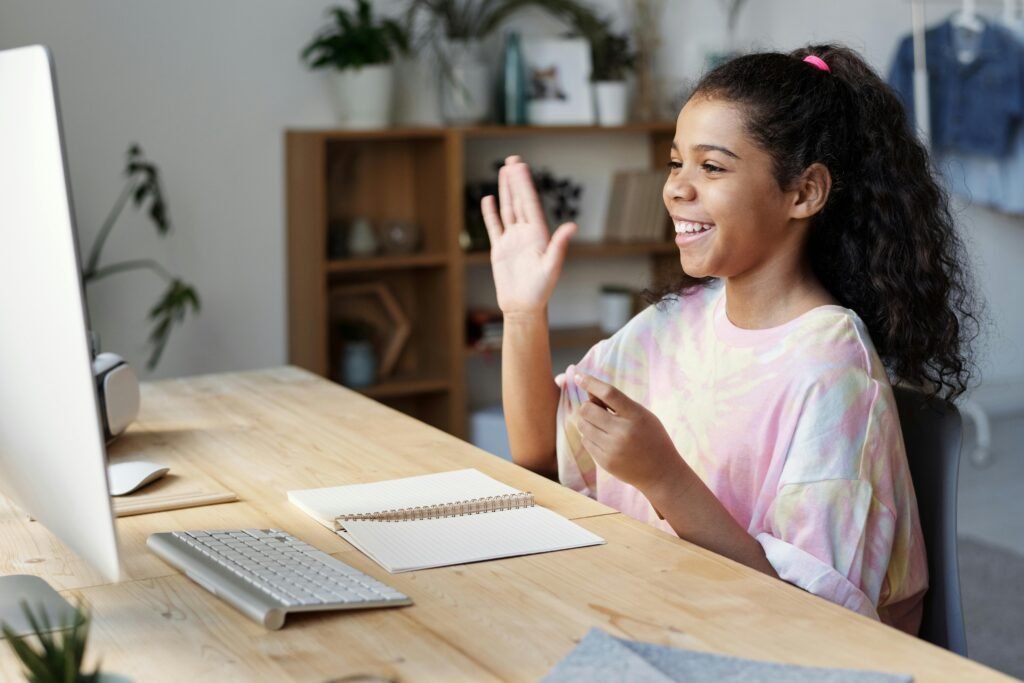
So what’s the fix? Create a distraction-free zone for homework. This means no phone, no TV, and no open tabs unless they’re part of the assignment. If your child insists on music, try soft instrumental tunes without words.
You can also use short focus bursts. Try the 20/5 rule—20 minutes of work, 5 minutes of break. During the break, let them stretch, draw, or move—just not back to screens. Then back to work.
This way, your child learns to focus deeply for short periods—and gets rewarded for doing so. Over time, they’ll finish faster and do better. And best of all, they’ll feel proud of what they’ve done.
90% of ADHD children use screens during meals, which is linked to impulsivity
In a recent study, 90% of children with ADHD were using screens while eating. This might seem harmless. After all, it keeps kids still, right? But here’s what the data shows: screen use during meals is linked to more impulsive behavior in children with ADHD.
Why? Because mealtime is not just about food—it’s about learning self-control. It’s a time to pause, chew, listen, and talk. When a screen is on, the brain doesn’t practice those things. It zones out. It doesn’t notice when it’s full. It doesn’t notice other people’s feelings. And it doesn’t get a break from stimulation.
Over time, kids who use screens at every meal may become more restless, less patient, and more impulsive. They may grab food, talk over others, or get upset more easily.
The good news? You can change this. Start by turning off screens during one meal a day. Make it a fun time. Talk about your day. Share a joke. Ask questions. If your child resists, explain that meals are a time to rest the brain and connect as a family.
Even 10 minutes of screen-free eating can help. Over time, it becomes a habit. And with that habit comes better self-control—not just at the table, but at school and in life.
45% of teachers report tech distraction as a top learning barrier for students with ADHD
When teachers were asked about what gets in the way of learning for students with ADHD, 45% of them said the top issue was tech distraction. That’s nearly half. This isn’t just about students sneaking a phone into class. It’s about how screens are changing the way kids pay attention—even when the phone is put away.
Children with ADHD already find it hard to focus in noisy or busy settings. Add tech to the mix, and it becomes even harder. Their minds may wander to what they saw online earlier. Or they may keep thinking about the game they’re going to play after class. Some even daydream about videos or music while trying to read or solve problems.
Even classroom tech can be distracting. Some learning tools and apps are helpful, but too many clicks, pop-ups, and fast changes can overload the ADHD brain. Instead of helping, it ends up making the child more anxious or scattered.
So what can parents do? Talk to your child’s teacher. Ask how tech is used in class. Find out if your child is getting too distracted. If they are, you can work together on a plan. Maybe your child sits closer to the teacher. Maybe they use paper instead of a device for certain lessons. Maybe there are breaks to reset the brain.
At home, reduce screen exposure right before school. That way, your child starts the day with a fresh mind—not one already buzzing with digital noise. The goal is not to blame tech, but to learn how to manage it.
When teachers and parents work together, ADHD students can thrive—even in a tech-filled world. It just takes awareness, teamwork, and small changes.
Kids with ADHD who limit screen time to under 2 hours a day show better executive function in 70% of cases
Executive function is how the brain organizes things—like remembering tasks, following steps, and staying on track. It’s one of the areas kids with ADHD struggle with most. But here’s the exciting part: when these kids use screens for less than 2 hours a day, their executive function improves in 70% of cases.
That means shorter screen time leads to better thinking, better organizing, and better behavior. It makes homework easier. It helps with chores. It even improves how they get ready for school in the morning.
Why does cutting screen time help? Because it gives the brain time to rest and practice. Instead of jumping from video to video, the brain gets used to sticking with one task. That builds strength—just like working out muscles.
To help your child, start by setting a clear screen limit. Less than two hours a day for fun use is a great goal. Use timers or settings on devices to make it easier to manage. And if your child earns extra screen time through good behavior or finished tasks, that’s okay too. Just stay within the daily limit.
Use the extra time for things that build executive skills. Puzzles. Building toys. Drawing. Even planning dinner or packing a school bag helps. All of these activities strengthen the brain in a way screens don’t.
When you reduce screen time and give your child meaningful, hands-on activities, you’re building the brain tools they need for school—and for life.
ADHD kids watching fast-paced shows show a 40% temporary drop in self-regulation afterward
Self-regulation means staying calm, thinking before acting, and managing feelings. But research shows that after watching fast-paced shows, kids with ADHD may lose up to 40% of their self-regulation—for a while.
That means they’re more likely to yell, argue, or get frustrated quickly. They may have a meltdown over a small problem. They may ignore rules or talk back. And all of this can happen right after a show that seemed innocent.
It’s not about the show being “bad.” It’s about how fast content affects the brain. When the show is always changing, always loud, always exciting—it trains the brain to expect that pace. Real life doesn’t move that fast. So when it slows down, the brain gets restless and emotional.
If your child often misbehaves after screen time, look at what they were watching. Try switching to slower-paced content—calm shows with fewer cuts and gentle sounds. Or better yet, replace one screen session a day with a quiet, hands-on activity.
You can also build a routine around screen use. Don’t go from fast screen to schoolwork right away. Give your child a buffer—something that calms the body and brain. Stretching. Drawing. Water play. Reading aloud.
These small changes protect your child’s mood and behavior. They help your child stay in control, even in a fast-moving world.
50% of ADHD teens experience sleep disruptions due to late-night screen use
Sleep and ADHD already don’t mix easily. Many kids and teens with ADHD have a hard time falling asleep. But when they use screens at night, it becomes even harder. In fact, 50% of ADHD teens say screen time keeps them awake or makes their sleep worse.
Phones and tablets keep the brain active, not sleepy. The light tricks the brain into thinking it’s still daytime. And the content—whether it’s gaming, chatting, or scrolling—is exciting. That makes it tough to relax and fall asleep.
Sleep is when the brain heals, grows, and organizes everything it learned. Without enough of it, ADHD symptoms get stronger. Kids may be more distracted, more emotional, and more forgetful the next day.
So what’s the fix? Make a family rule: no screens at least one hour before bed. If your teen resists, explain that this is a way to help them feel better—not a punishment. Offer choices during wind-down time: reading, puzzles, journaling, or music. Keep lights low and activities quiet.

You can also move device charging to outside the bedroom. Use a regular alarm clock instead of a phone. Create a relaxing bedtime routine with soft lights, gentle sounds, and no rush.
Fixing sleep takes time. But when your child gets better rest, everything improves—focus, mood, memory, and even family peace.
40% of digital learning apps increase distractibility in ADHD children if not monitored
Digital learning apps sound great. They’re fun, colorful, and sometimes even educational. But here’s a caution: if not used the right way, 40% of these apps can make kids with ADHD more distracted.
Why? Because many of these apps are built like games. They have pop-ups, animations, loud sounds, and rewards that come too fast. Instead of helping kids focus, they train the brain to chase the next click. This creates shallow learning, not deep thinking.
So what can you do as a parent? First, test the apps yourself. Use them like your child would. If you feel distracted, your child probably will too. Look for apps that move slowly, explain clearly, and don’t interrupt learning with games or ads.
Second, use these apps with your child—at least in the beginning. Sit next to them. Help them stay on task. Show them how to pause and think about what they’re doing. Praise their effort, not just speed.
And third, mix screen learning with hands-on learning. For every 30 minutes of screen-based learning, try 10 minutes of paper, writing, or building something. This helps the brain learn in a full, balanced way.
Tech can help—but only if it’s used wisely. You’re the guide. With your help, screens can be tools, not distractions.
ADHD brains are hypersensitive to dopamine, which screens trigger excessively
Dopamine is a chemical in the brain that helps with attention, motivation, and reward. It’s often called the “feel-good” chemical. For kids with ADHD, the brain is extra sensitive to dopamine—but also struggles to keep it balanced. This makes them crave things that give them fast rewards. And screens do exactly that.
When a child with ADHD watches a fast video or plays a quick-reward game, their brain gets a dopamine burst. It feels exciting, rewarding, and even calming. But the problem is, these bursts are short and intense. The brain wants more, and more, and more. It becomes harder for that child to feel satisfied with slower activities—like reading, drawing, or solving a math problem.
This is how screen overuse begins to change brain habits. The child may seem more distracted, more restless, or more bored by anything that doesn’t involve a screen. Over time, their brain becomes used to the “dopamine rush” from digital devices, and everything else starts to feel flat or frustrating.
So how can we help? Start by understanding your child’s brain needs healthy, steady dopamine—not just fast spikes. Offer activities that give small rewards over time—like puzzles, building, crafts, or team games. These may not seem as exciting at first, but they help build the brain in a better way.
You can also turn everyday tasks into little challenges or games. Set timers for cleaning or homework. Give points for effort, not just results. Help your child learn to enjoy success that builds slowly, not just instantly.
When screen time is balanced with real-world rewards, the brain starts learning how to wait, focus, and feel good in a healthier way. It takes time, but it’s worth it.
82% of parents believe screen time worsens tantrums in kids with ADHD
Parents know their kids best. And when 82% of them say that screen time leads to more tantrums, it’s worth paying attention. These are not just “bad moods.” They’re real emotional meltdowns that often come after—or when ending—screen time.
Why does this happen? Screens activate the brain’s reward system, especially in kids with ADHD. When the screen is taken away, it can feel like a crash. The child may feel angry, sad, or even panicked. They haven’t learned how to handle that shift yet. It’s like slamming the brakes on a car that’s going full speed.
This is especially true when screen time is long or unplanned. The longer a child is on the screen, the harder it is for their brain to let go. And when screen use happens without clear limits, children feel confused about when and why it ends. That’s a perfect storm for a meltdown.
So what can you do? Start by setting a timer before screen time begins. Let your child know exactly how long they have. Then, give a 5-minute warning. Don’t just say “time’s up”—help them transition. Offer a simple next activity that feels safe or fun.
You can also build routines that make the end of screen time more peaceful. Maybe screen time always ends with snack time, story time, or outdoor play. This helps the brain learn what’s coming next—and makes the switch easier.
Over time, your child will learn to manage the change better. Fewer tantrums mean more peace—and more chances for learning and connection.
Screen overuse delays language development in ADHD kids by up to 6 months
Language skills are the tools children use to think, share, and connect. But studies show that screen overuse can delay language development in children with ADHD by up to six months. That’s half a year behind their peers—and it makes everything else harder.
Why does this happen? Screen time is often one-way. The child watches or plays, but there’s little back-and-forth talking. Language grows when kids talk, listen, ask questions, and use words in real life. If most of their time is spent watching a screen, they miss out on that.
For ADHD kids, this is even more important. They often need extra practice to slow down, organize thoughts, and express themselves clearly. Without enough real talking time, they may struggle with vocabulary, reading, and even friendships.
So how can you help? Start with small changes. Replace some screen time with talking games. Ask open questions at dinner. Make up stories together. Read out loud—even if your child can read alone. Every word shared builds a stronger brain.
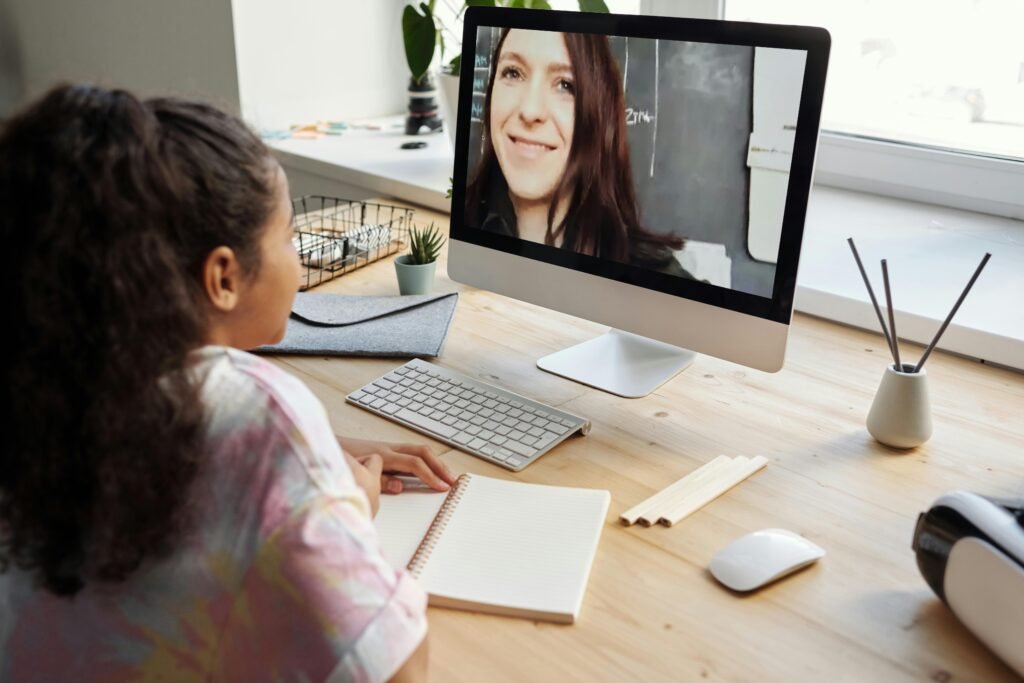
You can also set up screen time to be more interactive. Watch shows together. Pause and ask questions. Let your child explain what’s happening. This turns screen time into language time.
Your words are your child’s brain food. The more they hear, speak, and play with language, the stronger their learning foundation becomes.
ADHD kids using screens in bed are twice as likely to struggle in school
It’s tempting to let kids wind down with a screen in bed. It keeps them quiet. It feels cozy. But for kids with ADHD, this habit can hurt more than it helps. In fact, children who use screens in bed are twice as likely to struggle in school.
The problem isn’t just about lost sleep—though that’s a big part. It’s also about overstimulation. When the brain is fed with exciting content right before bed, it doesn’t rest properly. Even if your child falls asleep, their sleep may be shallow or broken. They wake up feeling tired, cranky, and unfocused.
This poor rest adds up. The next day, they may zone out in class, forget homework, or argue more. Their school performance drops. They may fall behind or lose confidence. It’s a cycle that starts with a screen—and ends with real-life struggles.
So how do you stop it? Make the bedroom a screen-free zone. Charge phones and tablets in another room. Replace screen time with quiet routines—like reading, gentle stretching, or dim lights with calming music.
If your child resists, talk about why it matters. Explain that screens at night are like putting candy in their brain when it needs a rest. And be patient—changing bedtime habits takes time.
But with your help, your child can sleep better, think clearer, and feel stronger in school.
65% of ADHD boys show increased hyperactivity after action-packed media
Not all screen content is the same. Fast-moving, action-packed media—like superhero shows, battle games, or wild cartoons—can actually make ADHD symptoms worse. In one study, 65% of boys with ADHD became more hyperactive after watching this type of content.
Why does this happen? The brain responds to what it sees. When a show is loud, quick, and full of jumping, shouting, or crashing, the brain feels like it needs to copy that. For kids with ADHD, this means more movement, more talking, and less control.
You might notice it right after the screen is turned off. Your child may run around, interrupt others, or bounce from activity to activity. It’s not bad behavior—it’s their brain still reacting to what it just saw.
So what’s the solution? Choose calmer content. Look for shows that are slower, softer, and more thoughtful. Nature shows, gentle animations, or educational videos can still be fun without overstimulating your child.
Also, create a calm-down period after screen time. Let your child move—jump, stretch, or play outside—to release some of that built-up energy in a healthy way.
Helping your child learn to choose better screen content means fewer meltdowns, better focus, and a calmer home.
70% of ADHD kids struggle to transition away from screen-based tasks
Transitions are tough for many children, but for kids with ADHD, they can be extra challenging—especially when moving away from screens. About 70% of ADHD kids have a hard time stopping screen time and shifting to another task. This means they may ignore your requests, throw tantrums, or seem completely lost after turning off the device.
Why is this so hard? Screens are highly engaging. They pull the brain in and reward it with sound, color, and action. The ADHD brain, which already seeks stimulation, gets deeply absorbed. When the screen turns off, it’s like a light switch being flipped—suddenly, there’s silence and nothing “fun” happening. That sharp change can feel almost painful to the ADHD brain.
This makes everyday tasks—like stopping a game to eat dinner or do homework—very hard. And if you’ve experienced that frustration as a parent, you’re not alone.
The good news? Transitions can be taught. Start with clear signals. Give a 5-minute and then a 1-minute warning before screen time ends. Use a timer so your child can see and hear the countdown.
After screen time, have a “buffer activity.” This could be a drink of water, a short walk, or even jumping jacks. Something physical helps the brain reset. Then move to the next task.
Also, praise your child when they handle transitions well—even just a little better than yesterday. Over time, their brain will learn how to move from screen mode to real-world mode more smoothly.
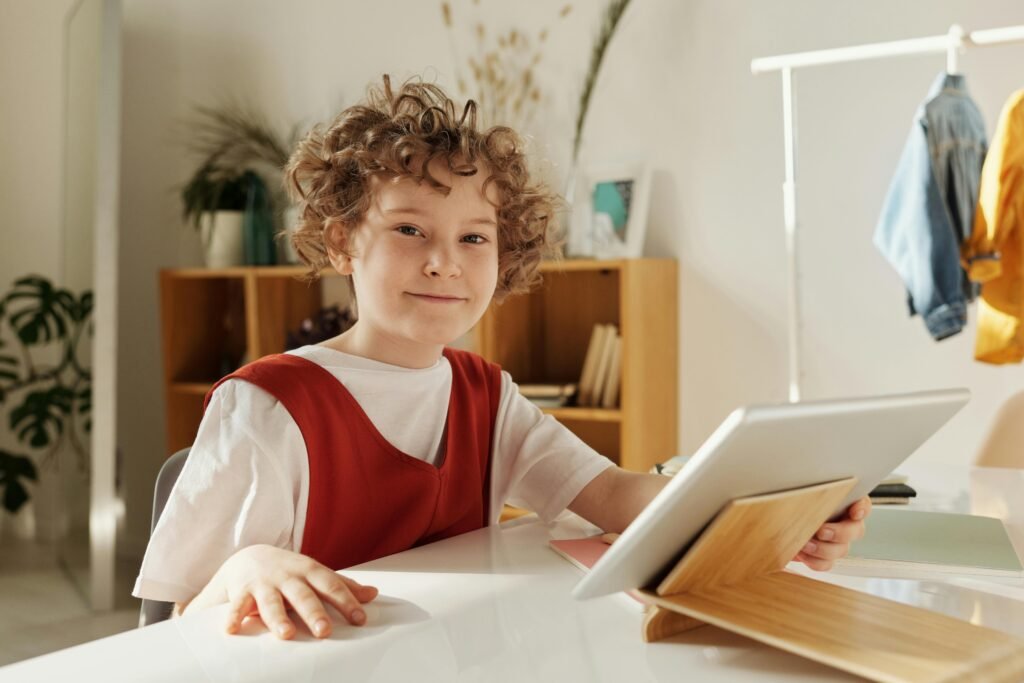
It’s not about forcing sudden change—it’s about building gentle, doable steps that help your child succeed.
Children with ADHD score 25% lower in comprehension when reading on screens versus paper
Reading on screens may seem convenient, but for kids with ADHD, it can seriously affect how much they understand. In fact, research shows they score 25% lower in comprehension when reading on a device compared to reading from paper.
Why is that? The screen format often encourages skimming instead of deep reading. The brain is used to scrolling, tapping, or watching videos, not slowing down to think about words. On paper, there are fewer distractions. The mind can stay focused longer and actually absorb the information better.
Also, screen reading often comes with distractions—ads, pop-ups, buttons, or even background noise. Each one breaks focus, especially for a child whose attention is already hard to hold.
So what’s the solution? When your child needs to really understand something—like a school reading or important instructions—use paper whenever possible. Print it out. Let them highlight or underline things. Help them stop after each section and talk about what it means.
If your child has to read on a screen, make sure the content is clean—no ads, no flashing parts, and no other tabs open. Increase the font size to reduce eye strain. And ask short questions to check understanding along the way.
Making small changes to how your child reads can lead to big improvements in how much they remember—and how confident they feel.
Early screen exposure (before age 2) is linked to a 75% higher chance of developing attention issues
The first two years of life are when a child’s brain is building fast and learning everything—how to move, speak, and think. And screens can actually slow that down. Studies show that babies who get a lot of screen time before age 2 are 75% more likely to develop attention problems as they grow.
This is a powerful number—and one that every parent should know.
Why? Because the baby brain needs human faces, real voices, and physical movement to grow. When babies are left with a tablet or TV, they don’t get the same quality of interaction. Their brain isn’t building those strong, deep connections that help with attention, memory, and emotion control.
The more time a baby spends with screens, the less time they spend exploring the real world. And that can delay speech, focus, and problem-solving.
So what can you do? Keep screens off when your baby is awake and active. Instead, talk to them, sing, play with blocks, or let them crawl and discover. Real life is the best “brain food” there is.
If screens are needed—like for a short video call with family—keep it brief and do it together. The key is interaction. The more your baby engages with you, the stronger their attention will grow.
These early years are precious. Protecting them from too much screen exposure gives your child a strong start—and a smarter, more focused future.
Only 15% of ADHD parents have access to ADHD-specific screen guidelines
Most parents of children with ADHD are doing their best. But when it comes to managing screen time, many are guessing. Only 15% have access to ADHD-specific screen time guidance. That means the majority are trying to figure it out on their own—often feeling frustrated, unsure, or even helpless.
Why does this matter? Because ADHD brains are different. What works for a neurotypical child might not work at all for a child with ADHD. Generic screen rules like “no more than two hours a day” don’t always help. ADHD kids need tailored strategies—ones that consider their sensitivity to stimulation, their difficulty with transitions, and their craving for reward.
So where can you find help? Start with your child’s doctor or therapist. Ask if they have recommendations for screen management specific to ADHD. Some pediatricians provide personalized plans based on your child’s needs.
You can also find tools and tips from ADHD support organizations. Look for ideas that include step-by-step limits, visual schedules, reward systems, and calm-down routines. And don’t forget: what works today might not work forever. Be ready to adjust.
At Debsie, we believe in giving families tools that truly fit their children. You deserve strategies that work for your child’s brain—not just the average kid.
More access to the right information can change everything—from your daily routine to your child’s long-term success.
High screen exposure correlates with 50% more disciplinary issues in ADHD classrooms
In classrooms with high screen exposure, teachers report 50% more behavioral issues among students with ADHD. That’s not just a small increase—it’s a major challenge for both kids and educators.
Why does this happen? One reason is attention fatigue. When kids use screens too much at home or even in school, their brains don’t get the break they need. They enter the classroom already overloaded or under-motivated. They may struggle to sit still, follow instructions, or control emotions.
Another reason is screen habits don’t match school expectations. Many screen activities are fast and fun—constant clicks, bright lights, quick wins. School tasks are slower and require patience. That mismatch leads to boredom, frustration, and acting out.
So how can schools and families work together to help? Parents can talk to teachers about what kind of screen use their child has during the day. If possible, reduce non-school screen time before school hours. Help your child enter class with a calm, ready mind.
Teachers can also create routines that give ADHD kids movement breaks, clear steps, and fewer digital distractions. Less flashy tech and more structured tasks help ADHD students stay on track.
When we reduce unnecessary screen exposure and build consistent routines, we help ADHD children behave better, learn deeper, and feel prouder of themselves in class.
37% of ADHD teens report feeling “mentally tired” after long screen sessions
Teens with ADHD are often seen as full of energy—but many quietly feel exhausted, especially after using screens for a long time. In one study, 37% of ADHD teens said they felt “mentally tired” after being on their devices for extended periods. That tiredness isn’t just physical—it’s a kind of brain fog that affects everything from mood to school performance.
This happens because screens demand constant attention. Every message, video, or notification pulls the brain in another direction. For the ADHD mind, which already has trouble filtering information, this back-and-forth is draining. It’s like trying to sprint all day without stopping.
After a long screen session, teens may say they feel “lazy,” “bored,” or “too tired” to do anything else. They may avoid homework, snap at family members, or just shut down. This can look like defiance—but it’s really mental fatigue.
What can you do? Teach your teen to notice when screen time is making them feel worse, not better. Help them build regular screen breaks into their day. Suggest that they pause every 30 minutes to stretch, drink water, or step outside. Encourage “screen-free resets” where they unplug for an hour and do something that restores them—like walking, art, or journaling.
You can also model this behavior yourself. If you unplug and say, “I needed that break,” they’ll start to see rest as something powerful, not a punishment.
Mental tiredness from screens is real—but so is the power to recover and protect the brain.
Limiting screen time improves classroom focus in ADHD kids by up to 35%
Here’s some really good news. When screen time is reduced, ADHD kids often show up to 35% improvement in classroom focus. That’s not just a small change—it can turn a struggling student into one who feels more in control, more capable, and more proud of their learning.
How does this work? With less screen time, the brain is calmer. It’s not overstimulated by fast images or rapid clicks. Sleep improves. Attention strengthens. And the child is more ready to listen, follow steps, and stay on task in class.
This doesn’t mean cutting all screen time completely. It just means finding the right balance. If your child is on screens for four or five hours a day, bring it down slowly—maybe 15 minutes less each week. Replace that time with something helpful for focus: movement, puzzles, reading, or even free play.
You can also talk to your child’s teacher. Share what you’re doing at home. Ask if they notice any changes in behavior, focus, or participation. This teamwork makes a big difference.
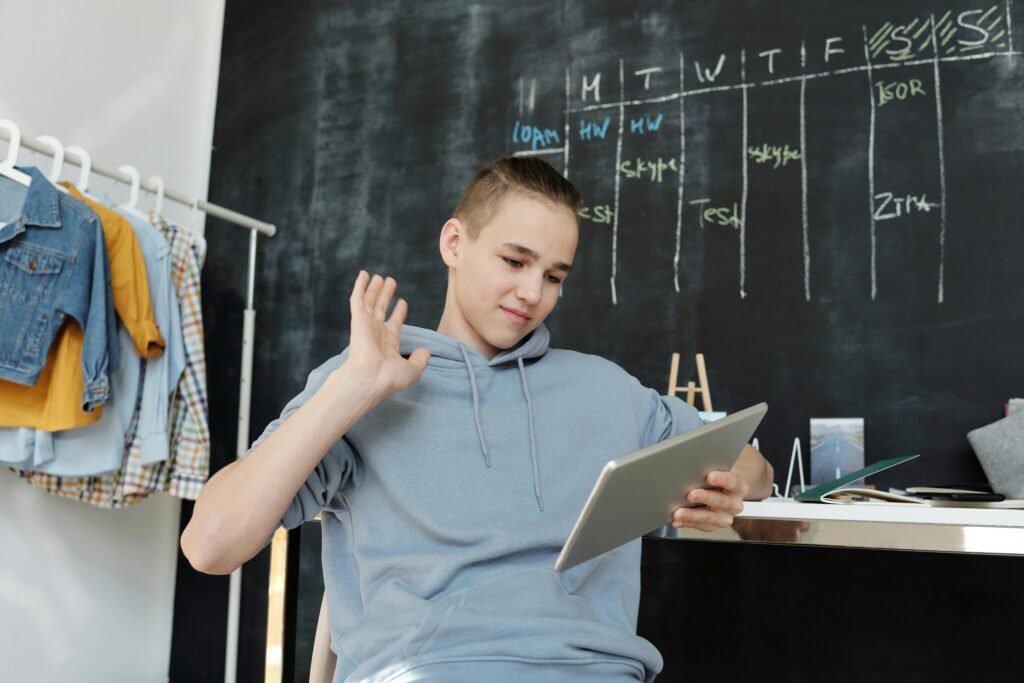
The classroom is where kids practice life skills every day. And when screen time is managed wisely, the classroom becomes a place where ADHD kids can shine.
Conclusion:
All the numbers, all the studies—they point to one simple truth: screens affect kids with ADHD differently. The ADHD brain is built to seek stimulation, chase rewards, and move fast. Screens give it all of that—but too much, too often, and too fast.
The result? Struggles with sleep, focus, mood, school, and even relationships.
